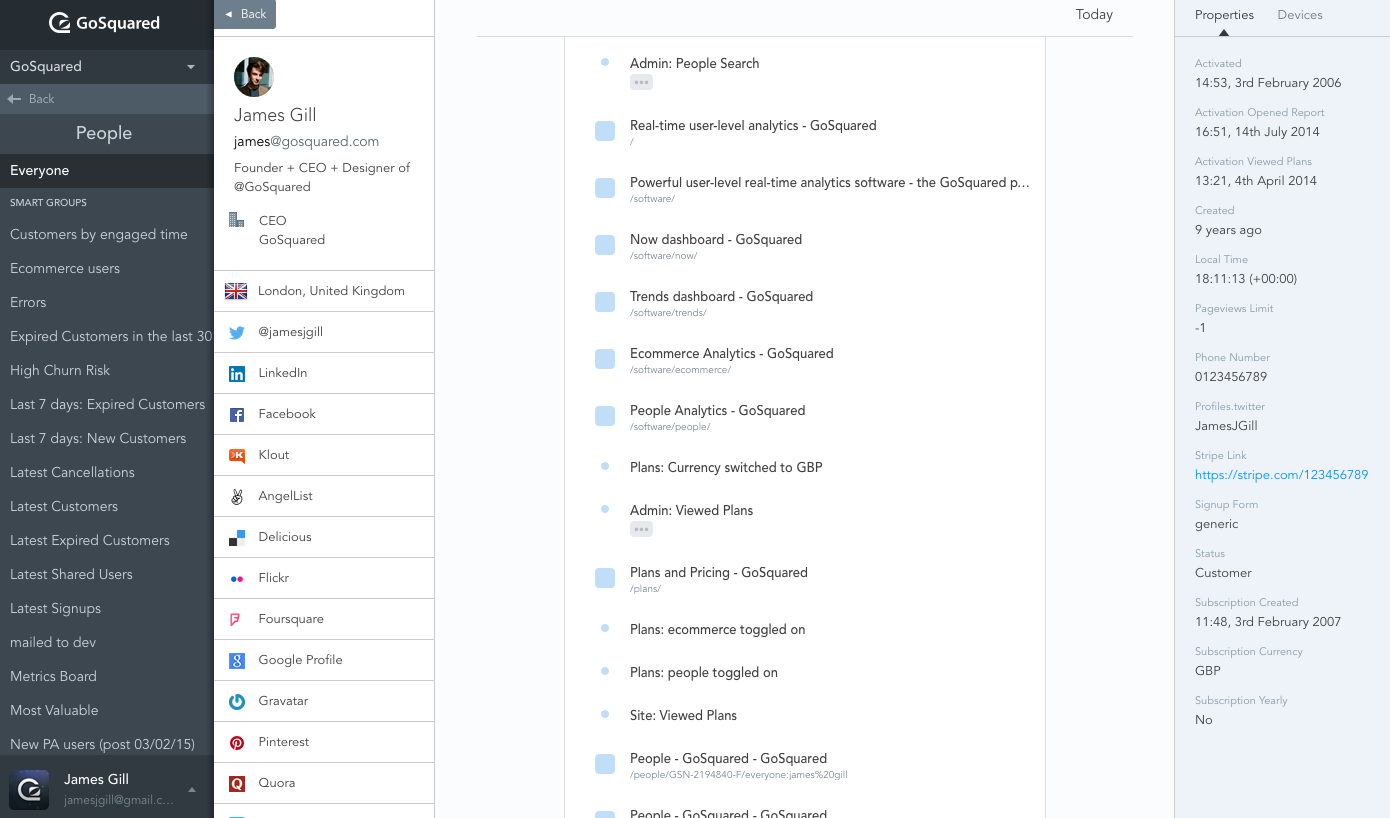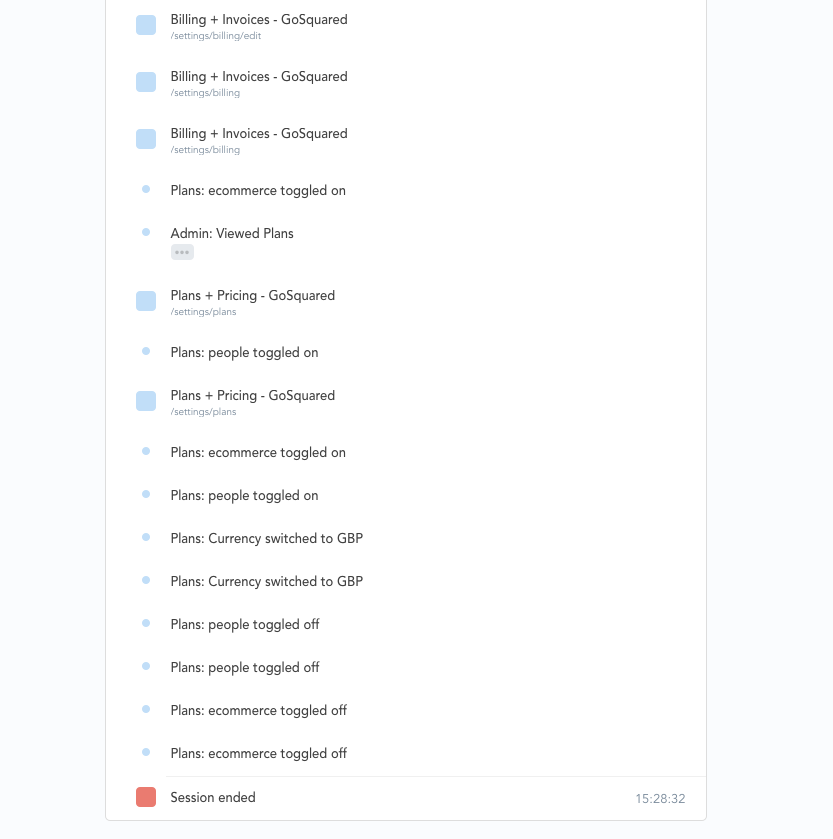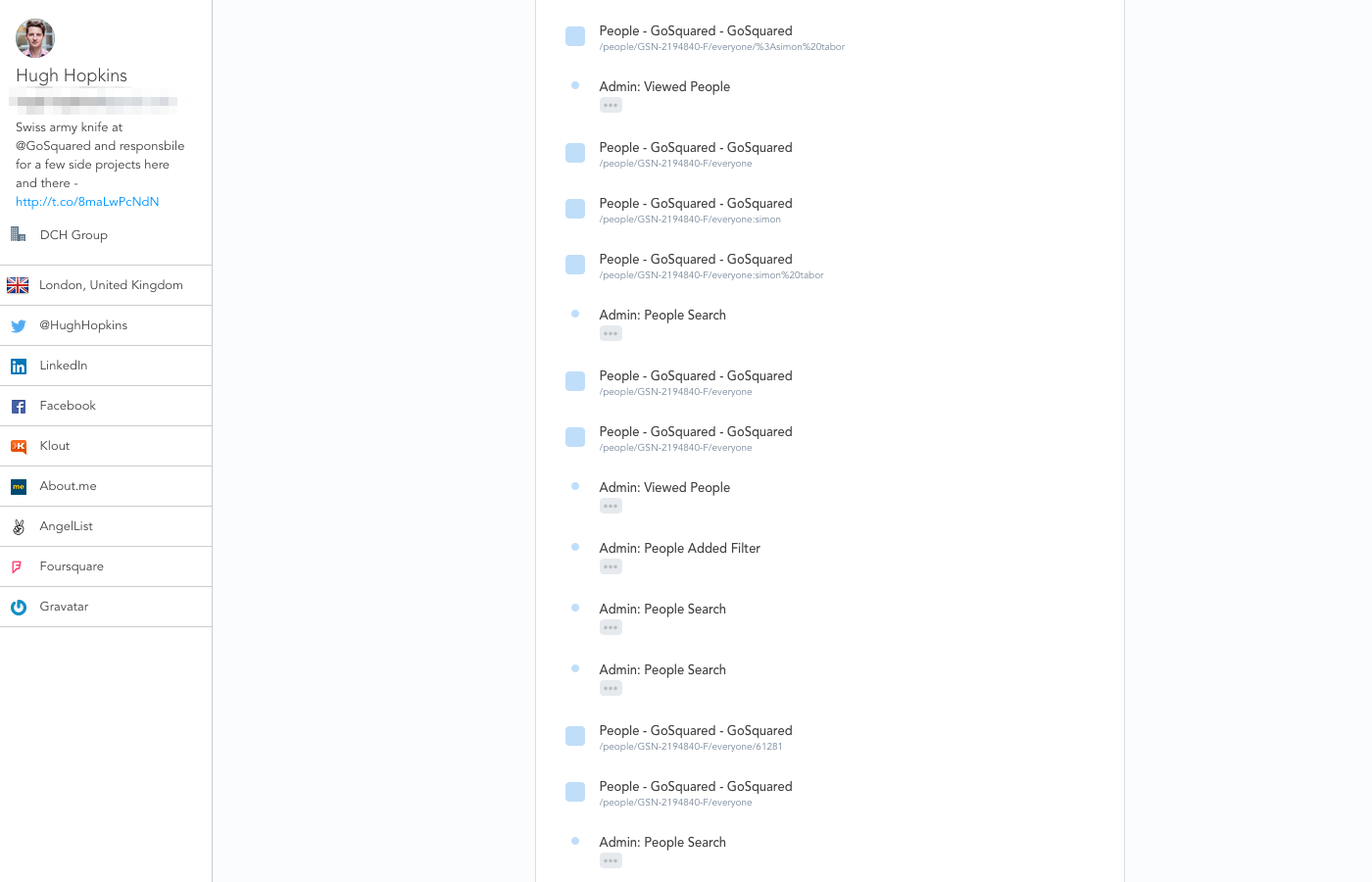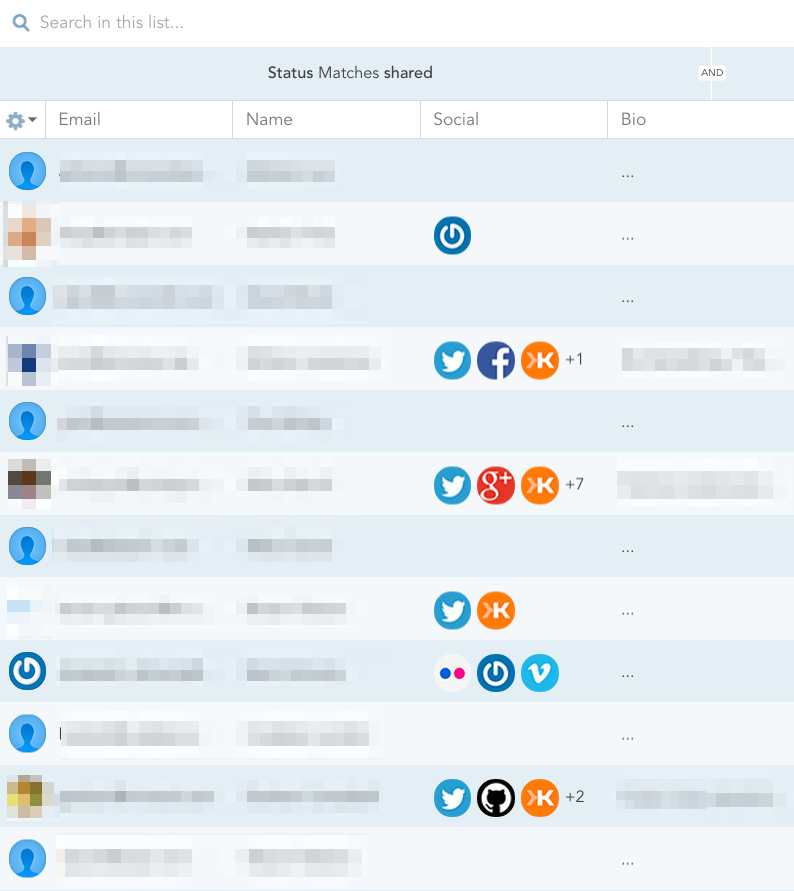In the first email James ever sent me about GoSquared (subject line: “Massive email of handy GoSquared related info”), he sent me a list of tools the teams uses and the final one was of course GoSquared:
Andrew, we eat our own dog food!
It turns out, that yes, yes we do. We’re naturally fanatical about our own product. A really common question we get asked by new customers is:
So, what’s normal usage?
The truth is, there is no standard GoSquared setup. Since GoSquared has been using GoSquared since before there even was a GoSquared (history lesson: our first analytics product was actually called LiveStats), our setup runs at full power.
In this post, I want to dive into all the ways we use GoSquared to get stuff done and grow our company. I’m going to share how we use all our products with a particular focus on the jobs that People CRM helps us do.
What do we track?
Unsurprisingly, we track a lot with GoSquared, whether that’s our sites, subdomains apps or frontend and backend events.
Our People CRM setup includes a profile of every user who has ever tried GoSquared and links account data we store in MySQL with backend events and frontend app and site tracking. We set 67 properties and even more events. We run a cron job script to keep the user data updated and at the moment, we use 29 smart groups.
Many interfaces
Similarly in terms of interfaces, we use pretty much everything.
In the office, we have a monitor showing Now and Trends on rotation (using the handy Revolver Chrome extension). On an even larger screen, we have big screen visualisations on display: timeline, concurrent visitors and location map. The big screen labs are a constant health check for the team: if anything explodes, we can see it straight away.

In Chrome, I have the Now dashboard open in a browser window all day and I bring up other dashboards as I need them or dive into People CRM.
Using GoSquared data in other apps
We use data from GoSquared in a couple of other fun places too.
Our business KPI sheet is our single point of reference for a range of performance metrics. All visitor and pageview data goes straight into that sheet from our API and updates via a cron job. Live visitor numbers sit side by side with trial signups, upgrades and monthly-recurring-revenue reports. We use Christopher Janz’s excellent KPI dashboard for early stage Saas companies.
We use the popular team chat tool Slack at GoSquared. In our #customers channel, we run a hubot integration that posts a notification every time a new user signs up for GoSquared with a bunch of basic profile data.
We have a link to their profile in People CRM so we can immediately check out their profile and activity. This integration is a really positive “nudge” for the team and removes a lot of friction involved in staying on top of new users.

We use data in People CRM or from our reporting API to run analyses on marketing effectiveness and product usage. We’re increasingly running a lot of these queries and investigations inside People CRM.
So that’s our GoSquared stack. Let’s dive into how the different jobs on the team use the product.
Marketing: checking the pulse
Site visitors is a fundamental marketing metric that tells us if our reach is expanding or declining on any given day or week. Visitors to your site is a simple sanity check for any company that aspires to grow fast: did more or less people know about our company this week? I check Trends several times to see if the day is going to be on track and I report those numbers every Friday and Monday during team catchups. We set benchmarks and targets that we expect blog posts and content to hit during the week of release.

We send traffic spike alerts into Slack as well via our integration. It’s a really fun feature and it basically makes sure everyone knows when something is blowing up and we can jump on any opportunities to join the conversation.

People CRM
We started using People CRM internally back in summer 2014 (we used to call it People Analytics). It’s become our first port of call for any questions about our customers and users.

Smart groups and smart jobs
We have smart groups for everything. Smart groups are saved groups of users based on any number of filters. We can create filters based on a property (which can be a number, some text, a date stamp or a boolean), how often they’ve triggered an event, when they last triggered an event or any combination thereof.

We use smart groups to have a quick reference guide for the people using GoSquared who we should be looking at, helping or interacting with. We can then set the columns to put as much useful data as possible in the interface.
People CRM is a tool that gives us tremendous amounts of context with minimal effort or friction. Let’s look at some of the questions our team are answering with it.
How the sales team uses GoSquared
The latest signups smart group is our go-to place for intelligence on new GoSquared users. I’m looking at data like the number of visits or the number of times a new signup has viewed dashboard.
I also check our activation events in this smart group: anyone who activates at least three of these is well on their way to having a successful trial. Other data I’m looking at in this view is the number of sharing invites sent or sites added to GoSquared. To get an idea of how much a user could potentially be worth to us, we look at pageview, people and transaction usage.

The other data that we act on in the latest signups group is anything we can gleam from a user’s answer to “where did you hear about us?”, the referring URL if there is one or the pages that the user’s been browsing on the GoSquared site.
Often, we’ll find someone found us via a particular article or a support doc on some features or from browsing the API docs. We can usually make a good guess about the job that user is trying to do so if we can reach out to provide advice or any assistance, we go ahead and do that.
For sales, we’ve also got smart groups for users currently on the trial and we use this to monitor our most engaged trial users. By choosing columns like engaged times, used API or average depth of visit, we can quickly bring up interesting insights about the trial batch.
Helping customers upgrade
The final job that People CRM is helping our sales team do is to figure out which users are considering upgrading. Almost all users check out the plans page on the public site or inside our app at some point during the trial: that doesn’t tell us much, however.

What does suggest that they’re considering an upgrade is if they’ve checked out the page more than five times, changed the currency toggle and looked at several options. It’s usually a really good sign if someone comes into the app and only looks at the plans page during that session.
Delivering support experiences
People CRM is helping us deliver significantly better support experiences, immediately providing context on what the user is doing and where they might be struggling. Viewing their profile in People CRM, we can also get a handle on their relationship with GoSquared, how long they’ve been with us and their monthly-recurring-revenue value.

Can we spot bugs before they become bugs?
We have a javascript error event that can help us find parts of the app that are breaking.

We can also pair up queries to find possible problems. For example, if someone visits the plans page repeatedly, keeps changing some settings but still hasn’t created a subscription, that’s a very strong indicator that they’re trying to upgrade but something isn’t working.
Managing customer relationships
In the account management role, we’re using smart groups to ensure that our customers continue to succeed with the product and that their engaged and interested.

Our “whales” smart group helps us keep an eye a handful of our most valuable accounts and lets Hugh, account manager, quickly click through and check their behaviour and activity is as expected.

We have a couple of groups for sets of users that we typically want to query further or that share similar characteristics. These smart groups are things like shared users and ecommerce users.

Proactive account management
People CRM has become supremely powerful for proactive account management. Our slipping away smart group highlights users who are becoming disengaged and are at risk of churning (cancelling their account.

For this group, we want to work out on a case by case basis what’s going on, what steps led them to becoming disengaged and reach out to help. We’re using this smart group to identify users who might leave within two or three months. We definitely don’t save everyone but it’s helping us catch early concerns o problems.
Product decisions
People CRM has rapidly sped up our feedback loop for understanding product usage and evaluating different paths and patterns in the app. It’s now easy to grab a bunch of users who have triggered any event, dashboard or account interaction that we’re tracking.

We’ve been using People CRM to understand what an active and inactive user looks like.
Using the People API
Hugh has been using the People API to export usage data and explore it in Google Sheets. Via the beta reporting API for People CRM, he’s been grabbing session data by user and evaluating how new customers and trial users compare in terms of average section depth and action. Using this analysis, we can easily spot power users and start to figure out what the key signs or usage patterns in the product are that suggest a user is regularly getting value from the product. We’ll be releasing this feature publicly later in the year.
Data and strategy
Hopefully, I’ve given you some ideas of the things you can do with GoSquared. At the moment, GoSquared is the de facto place for customer data and finding the users we urgently need to engage with or the ones who we could be serving better.
At our company, there are literally no product and feature discussions happening without someone on the team bringing usage data from People CRM to the table. We’re also excited because everyone on the team is relying on a single data point, we’ve thrown out an old system where we’d use any combination of MySQL, our own internal tools, Mailchimp reports, our support software and gut to make decisions.
Our team uses GoSquared to ensure we always have the data we need in a readily accessible and easy to use form. We’re biased of course, but we think our setup works pretty well.
Want to use GoSquared like we do? Start a trial and we’d be happy to help you get setup like a pro!

